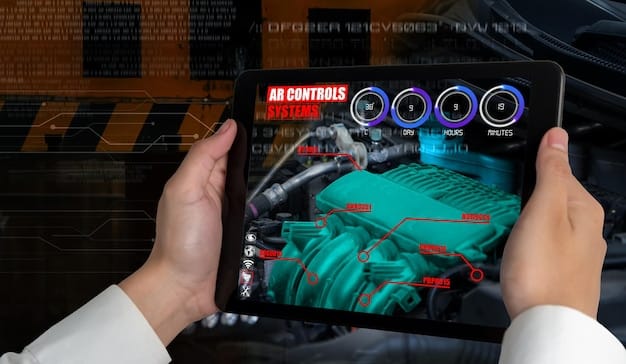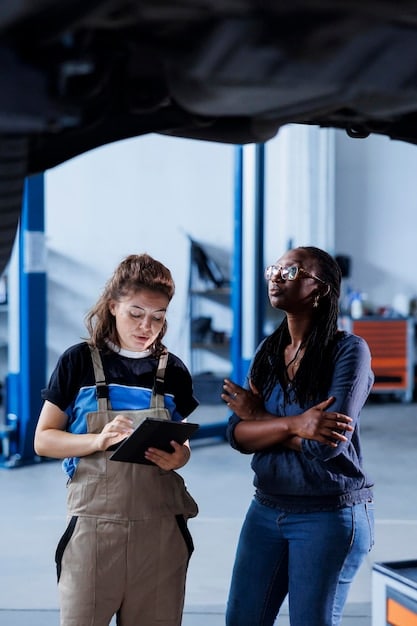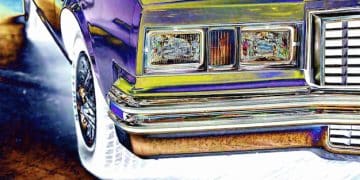The Future of Automotive Museums: A Guide to Preserving Car Culture

The future of automotive museums lies in embracing technology, interactive experiences, and community engagement to preserve and celebrate car culture for future generations.
Automotive museums have long served as hallowed halls for automotive enthusiasts, showcasing the evolution of design, engineering, and the cultural impact of cars. But what does the future hold for these institutions? The answer lies in embracing innovation and adapting to the changing expectations of a new generation. This article explores the future of automotive museums: preserving car culture for generations to come.
Evolving Exhibits: From Static Displays to Immersive Experiences
The traditional automotive museum, with its rows of pristine cars roped off from visitors, is steadily evolving. The emphasis is shifting towards more engaging and immersive experiences that cater to a wider audience.
Interactive Technologies and Augmented Reality
Museums are increasingly incorporating interactive technologies to enhance the visitor experience. Touchscreen displays provide detailed information about each vehicle, while augmented reality (AR) applications allow visitors to virtually explore the inner workings of an engine or customize a classic car.
Simulators and Hands-On Activities
Beyond digital interactions, museums are also introducing simulators that allow visitors to experience the thrill of driving a classic race car or operating heavy machinery. Hands-on restoration workshops provide opportunities to learn about the craft of automotive preservation.
- Augmented reality apps that overlay information onto vehicles.
- Driving simulators that recreate the experience of vintage racing.
- Interactive displays showcasing engine mechanics and automotive history.
- Workshops where visitors can participate in basic car maintenance.
By embracing these technologies and activities, museums can transform from passive viewing spaces into dynamic learning environments.

The Digital Realm: Online Collections and Virtual Tours
The reach of automotive museums is no longer limited by physical space. The digital realm offers unprecedented opportunities to expand collections, engage with a global audience, and provide access to automotive history for those who cannot visit in person.
Digitizing Collections for Online Access
Many museums are actively digitizing their collections, creating comprehensive online databases that include high-resolution images, detailed vehicle specifications, and historical documents. These digital archives offer researchers and enthusiasts a wealth of information at their fingertips.
Virtual Tours and Online Exhibits
Virtual tours allow visitors to explore museum halls from the comfort of their own homes. Online exhibits curate specific themes or eras, providing curated narratives and multimedia content that enhances the virtual experience.
Online collections and virtual tours make automotive history accessible to a global audience, transcending geographical boundaries and physical limitations.
Education and Outreach: Engaging the Next Generation
Ensuring the future of car culture requires actively engaging the next generation of enthusiasts. Automotive museums are playing a crucial role in fostering a love for cars and promoting STEM education through innovative programs and initiatives.
Educational Programs for Students
Museums offer a variety of educational programs tailored to students of all ages. These programs incorporate hands-on activities, interactive exhibits, and curriculum-based learning to teach students about automotive engineering, design, and history.
Partnerships with Schools and Universities
Collaborations with schools and universities extend the museum’s reach, providing opportunities for students to participate in internships, workshops, and research projects. These partnerships help cultivate a pipeline of future automotive professionals and enthusiasts.
By investing in education and outreach, museums can inspire the next generation to appreciate and contribute to car culture.

Community Engagement: Making Museums a Hub for Car Culture
Automotive museums are increasingly serving as community hubs, hosting events, gatherings, and programs that bring together car enthusiasts of all backgrounds.
Car Shows and Swap Meets
Museums often host car shows and swap meets, providing opportunities for enthusiasts to showcase their vehicles, connect with fellow collectors, and buy and sell parts and memorabilia. These events foster a sense of community and celebrate the diversity of car culture.
Driving Clubs and Local Partnerships
Partnering with local driving clubs and automotive organizations allows museums to tap into existing networks of enthusiasts. These collaborations can lead to joint events, educational programs, and fundraising initiatives.
- Regular car shows featuring classic and modern vehicles.
- Swap meets for buying, selling, and trading automotive parts.
- Driving tours and rallies organized in partnership with local clubs.
- Community events celebrating automotive heritage and innovation.
These initiatives transform museums from standalone institutions into vibrant centers of car culture.
Sustainable Practices: Preserving Cars and the Environment
As environmental concerns become increasingly prominent, automotive museums are embracing sustainable practices to minimize their impact on the planet.
Restoration and Preservation Techniques
Museums are adopting environmentally friendly restoration techniques, using sustainable materials and reducing waste. They are also implementing strategies to preserve vehicles for future generations, minimizing the need for extensive repairs or replacements.
Electric Vehicle Displays and Education
Showcasing electric vehicles and providing information about sustainable transportation is another way museums are addressing environmental concerns. These exhibits promote innovation and encourage visitors to consider the future of mobility.
By embracing sustainable practices, museums can demonstrate their commitment to preserving both car culture and the environment.
Funding and Sustainability: Ensuring Long-Term Viability
The long-term viability of automotive museums depends on securing sustainable funding models and adapting to the evolving economic landscape.
Diversifying Revenue Streams
Museums are exploring a variety of revenue streams beyond ticket sales, including membership programs, corporate sponsorships, and fundraising events. These diversified sources of income provide greater financial stability.
Grant Opportunities and Government Support
Seeking grant opportunities from foundations and government agencies is another important strategy for securing funding. These grants can support specific projects, such as digitization initiatives or educational programs.
Securing sustainable funding is essential for ensuring that automotive museums can continue to thrive and preserve car culture for generations to come.
| Key Point | Brief Description |
|---|---|
| 📱 Interactive Exhibits | Tech like AR and simulators enhance visitor engagement. |
| 🌐 Digital Access | Online collections and virtual tours broaden the audience. |
| 📚 Education Focus | Engaging students through hands-on programs and partnerships. |
| 🤝 Community Hub | Hosting events and partnering with local clubs builds community. |
FAQ
▼
Automotive museums are moving beyond static displays by integrating interactive technologies like augmented reality and driving simulators to create more engaging experiences for visitors.
▼
The digital realm enables museums to digitize collections, offer virtual tours, and curate online exhibits, expanding their reach to a global audience and providing access to automotive history.
▼
Museums are developing educational programs, partnering with schools, and offering hands-on workshops and internships to inspire and educate young people about automotive engineering and design.
▼
Museums are creating community hubs by hosting car shows, swap meets, and partnering with local driving clubs and automotive organizations to bring together enthusiasts of all backgrounds.
▼
Automotive museums are embracing environmentally friendly restoration techniques, showcasing electric vehicles, and promoting sustainable transportation options to minimize their impact on the planet.
Conclusion
The future of automotive museums is bright, filled with opportunities for innovation, engagement, and community building. By embracing new technologies, expanding their digital presence, and fostering a love for cars in the next generation, these institutions can continue to thrive and preserve car culture for years to come.





